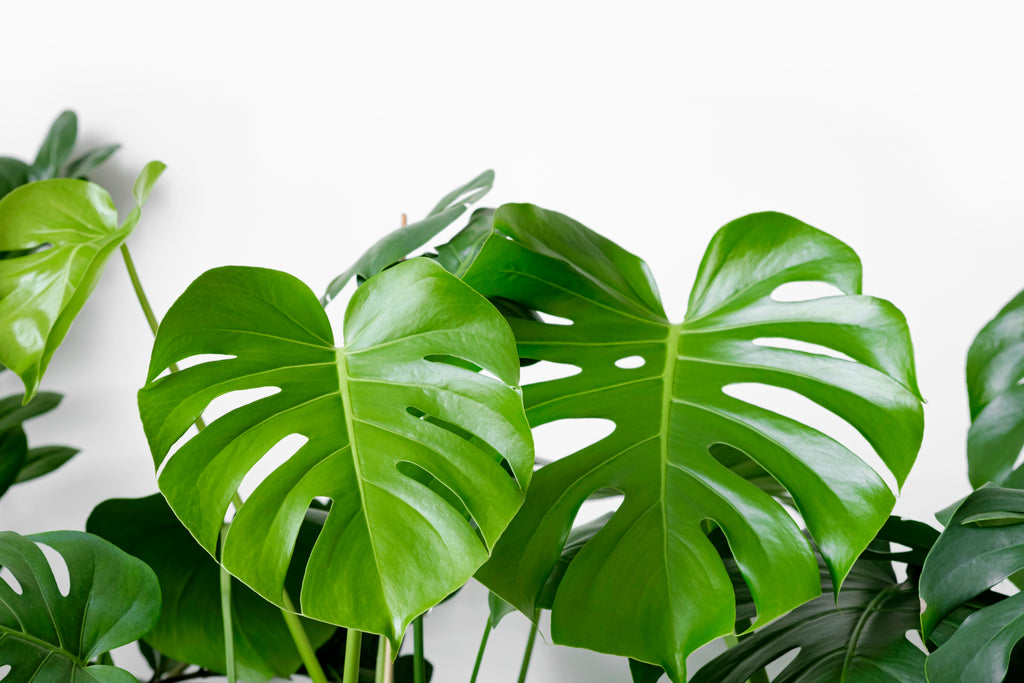At Plantsome HQ, we’re big fans of fenestration. Those unique, swiss cheese-like holes aren't just for show either—they're actually a sign of a healthy, thriving plant! In this guide, we'll talk about the phenomenon of leaf fenestration, exploring its significance, how to encourage it, and why it matters for your plant's well-being.
Simply put: leaf fenestration, characterized by the presence of holes or "windows" in plant leaves, is more than just a decorative feature. It's a natural phenomenon that reflects the plant's adaptation to its environment, allowing it to maximize light exposure and airflow for optimal growth. While Monsteras are the most commonly known plant for having leaf fenestrations, it is not exclusive to Monstera species. Similar patterns can be observed in some Epipremnum and Succulent varieties, each showing off their own unique adaptations shaped by their respective environments.

There are many theories regarding the origins of Monstera leaf fenestration, with explanations ranging from adaptation to resist hurricane winds, to being a facilitator of water contact with roots. However, research by Christopher Muir of Indiana University proposes a pretty compelling hypothesis that is more tied to lighting conditions. In tropical rainforests where Monsteras thrive, lower plants rely on capturing sunflecks—small beams of sunlight that poke through the forest canopy. Muir suggests that by developing fenestrated leaves, Monsteras optimize light absorption, enhancing their growth and survival in shaded environments—the same reason these plants are experienced climbers.
Encouraging fenestrated leaf growth in your Monstera requires patience and strategic care. Allow your Monstera to develop fenestrated leaves naturally as it matures. Leaf morphology evolves with age, with fenestration typically emerging when the plant reaches a height of around three feet.
Indirect Sunlight: Position your Monstera in a spot with bright, indirect sunlight, mimicking its natural setting under the canopy of larger trees.
Moderate Humidity: Maintain optimal humidity levels by regularly misting the leaves or using a humidifier. This fosters healthy leaf development and prevents dehydration.
Appropriate Watering: Water your Monstera thoroughly, allowing excess water to drain away to avoid waterlogged soil and potential root rot.
Stable Conditions: Shield your Monstera from sudden temperature fluctuations or drafts, as these stressors can hinder leaf growth. Provide a stable, warm environment to promote fenestration.
Pruning: Trim off older, smaller leaves from the base of the plant to stimulate the production of larger, fenestrated leaves. This pruning technique promotes healthy growth and encourages the development of distinctive leaf patterns.
We’re Fan-Girling for These Fenestrations!
Monstera Deliciosa (XL) | Swiss Cheese

Monstera Adansonii | Monkey Mask Swiss Cheese Plant (S)

Thai Constellation Monstera Deliciosa | Variegated Swiss Cheese Plant (M)

As your Monstera grows and starts showing off those cool fenestrated leaves, it's like watching nature do its thing, right in your home! It's pretty neat to see how this plant adapts and thrives under your care. Patience is key, so get to know your plant and its needs, and before you know it, you'll have a jungle-worthy Monstera on your hands. Enjoy the journey—it's all part of the fun!












